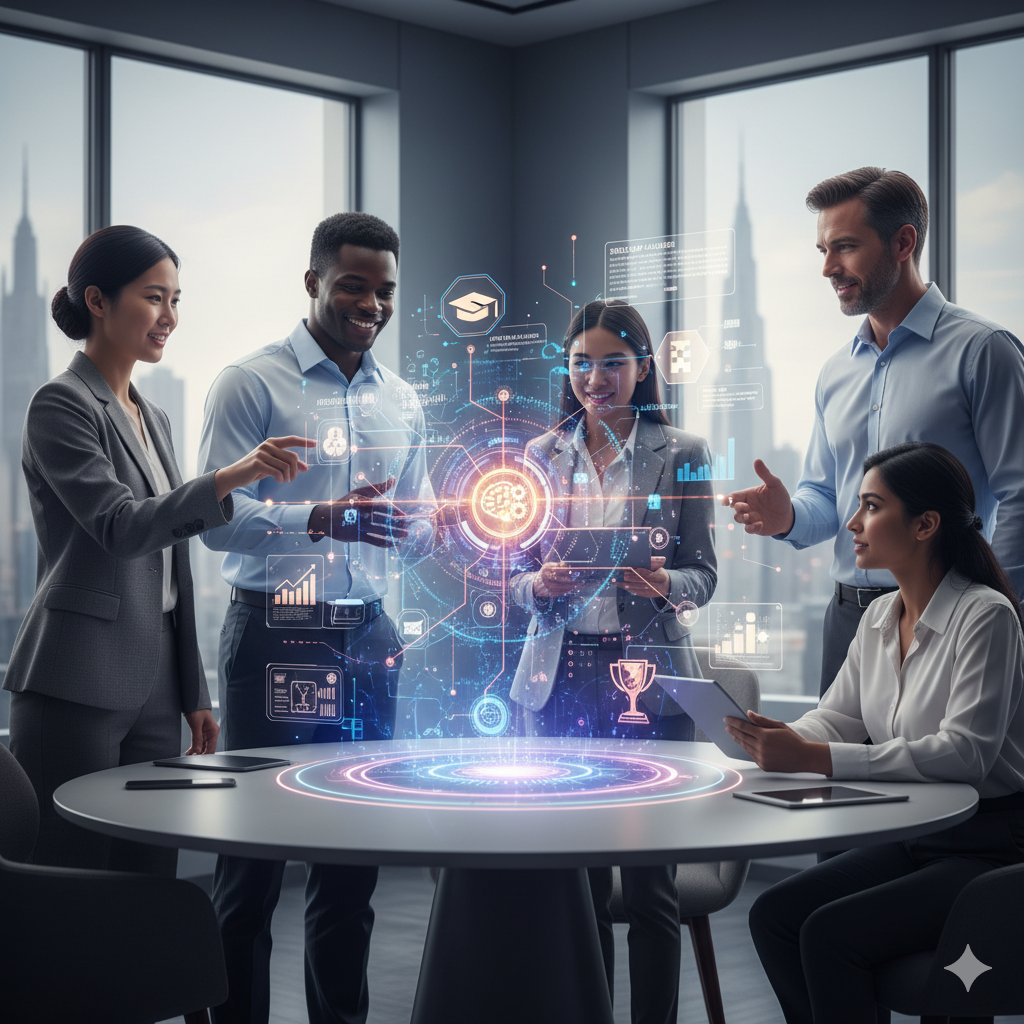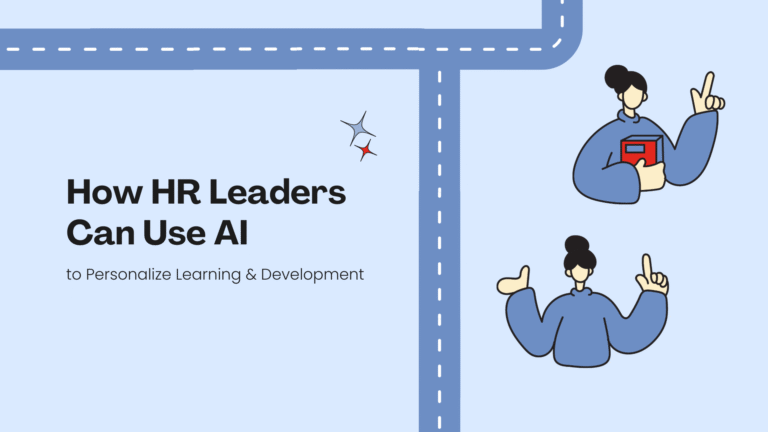For years, corporate learning followed a “one-size-fits-all” model: same courses, same assessments, same timelines. But employees learn differently. Some thrive in microlearning formats, others in interactive simulations or coaching sessions.
AI makes it possible to personalize every aspect of the L&D experience—automatically and at scale. Using algorithms that analyze behavior, performance, and engagement data, AI can recommend content, adjust difficulty levels, and even predict future skill needs.
For HR leaders, this means training becomes not just efficient but deeply relevant. Employees engage more, learn faster, and apply knowledge more effectively.
How AI Transforms Learning & Development for HR Leaders
Let’s look at four key ways HR and L&D professionals can use AI to personalize learning and make measurable impact.
1. Intelligent Skill Mapping and Gap Analysis
AI-driven platforms can scan employee profiles, performance data, and learning histories to identify skill gaps across the organization. This enables HR leaders to:
Build accurate skill inventories.
Match employees to relevant learning paths.
Forecast future skill needs based on business goals.
For example, an AI platform might detect that a group of managers needs stronger data storytelling skills and automatically recommend a focused AI training module on business analytics.
This insight-driven approach helps HR teams align L&D initiatives with organizational strategy—not just training for training’s sake.
2. Personalized Learning Pathways
AI can curate personalized learning journeys based on each employee’s role, goals, and performance metrics.
For instance:
A sales manager might receive adaptive learning content on negotiation, product analytics, and AI-powered CRM tools.
A team lead in HR might get microlearning lessons on predictive hiring and AI for leaders.
Platforms like LinkedIn Learning, Degreed, and Coursera for Business already use AI to personalize recommendations. But forward-thinking HR teams are going further—using internal data and performance feedback to create dynamic learning ecosystems.
This ensures that employees are learning what matters most, not just what’s trending.
3. Real-Time Learning Insights and Coaching
AI doesn’t stop at content delivery—it provides actionable insights into how employees learn.
HR leaders can monitor:
Engagement levels across departments.
Completion rates for different learning modules.
Correlations between training and performance improvement.
Some AI tools even act as virtual coaches, providing real-time feedback during training exercises. For example, a presentation skills simulator might analyze tone, pace, and clarity, then offer personalized suggestions for improvement.
This kind of AI workshop experience makes learning immediate, interactive, and measurable—helping managers and employees see tangible progress.
4. Predictive Learning and Career Pathing
One of the most powerful aspects of AI in L&D is prediction. AI systems can forecast which skills will become critical in the next 12–24 months and suggest training before gaps appear.
Imagine being able to identify which employees are ready for leadership roles or which departments will need AI literacy training next quarter.
This proactive approach allows HR to shift from reactive training to strategic workforce planning. It also empowers employees to take control of their development with data-backed guidance.
When HR leaders combine this with personalized AI training, they foster a culture of continuous learning and agility.

Overcoming Common Barriers to AI-Driven L&D
While the benefits are clear, implementing AI in learning programs can be daunting. HR leaders often face challenges such as:
Data silos: Training data scattered across platforms makes insights incomplete.
Change resistance: Employees fear AI will replace human decision-making.
Skill gaps: HR professionals may lack AI literacy to interpret outputs effectively.
The solution lies in capability building. Start small—pilot an AI-powered learning tool in one department. Then, upskill HR teams through targeted AI workshops designed to build confidence and critical thinking around AI tools.
When leaders understand how AI works and how to govern it responsibly, adoption becomes smoother and more sustainable.
The Future of AI in Learning: Human + Machine Synergy
AI will never replace the empathy, intuition, and strategic vision that define great HR leaders. But it can dramatically enhance their ability to deliver meaningful learning experiences at scale.
The future of L&D is hybrid—combining human judgment with machine precision. HR professionals who master AI will not only personalize learning but also drive engagement, retention, and business growth.
Conclusion
Personalized learning isn’t just a trend—it’s becoming the expectation. AI offers HR leaders the tools to make learning more dynamic, relevant, and measurable than ever before. By integrating AI into your L&D strategy, you can align talent development with organizational goals, empower employees to grow faster, and build a truly future-ready workforce.
It’s time to turn AI from a buzzword into a leadership advantage. Invest in AI literacy, explore AI workshops for HR, and start building the intelligent learning systems your teams deserve.
FAQs
1. How does AI personalize corporate learning?
AI analyzes learner data—like performance, interests, and skill gaps—to recommend tailored training paths, making learning more relevant and effective.
2. Do HR leaders need technical knowledge to use AI in L&D?
Not necessarily. With basic AI training, HR leaders can interpret insights, guide strategy, and collaborate with tech teams effectively.
3. What are examples of AI tools for personalized learning?
Popular platforms include Degreed, Coursera for Business, EdCast, and internal AI-enabled LMS solutions that adapt content to learner profiles.
4. How can AI workshops benefit HR teams?
AI workshops help HR professionals understand AI applications in L&D, evaluate vendors, and design ethical, data-driven learning programs.
5. What’s the ROI of AI-driven learning personalization?
Organizations see higher engagement, faster skill acquisition, and measurable links between learning investments and business outcomes.
